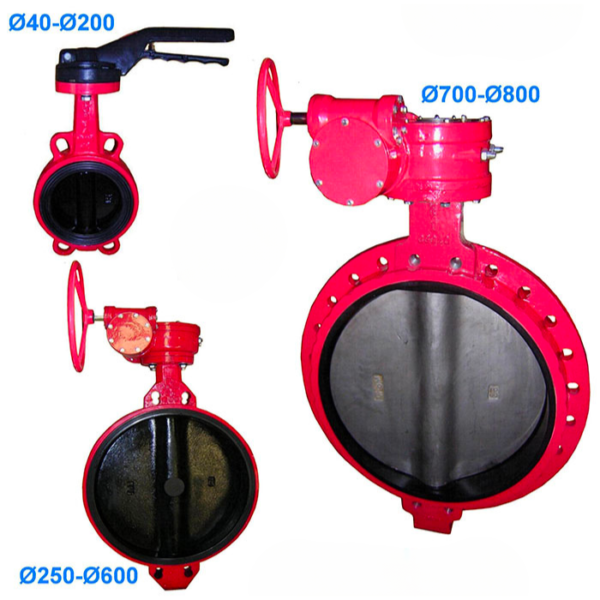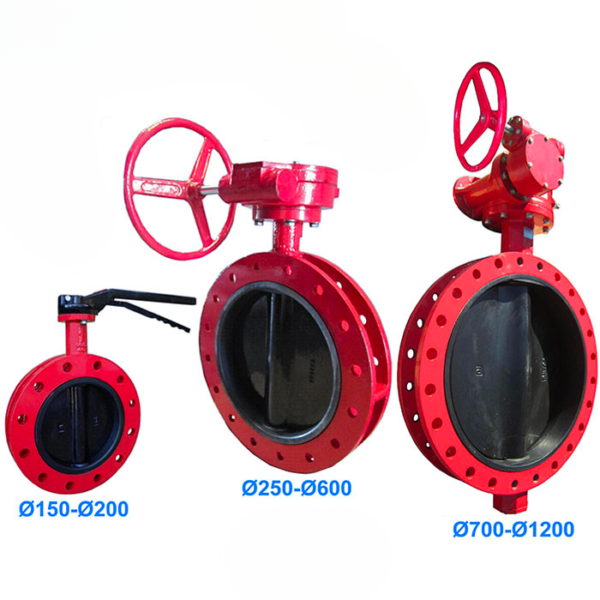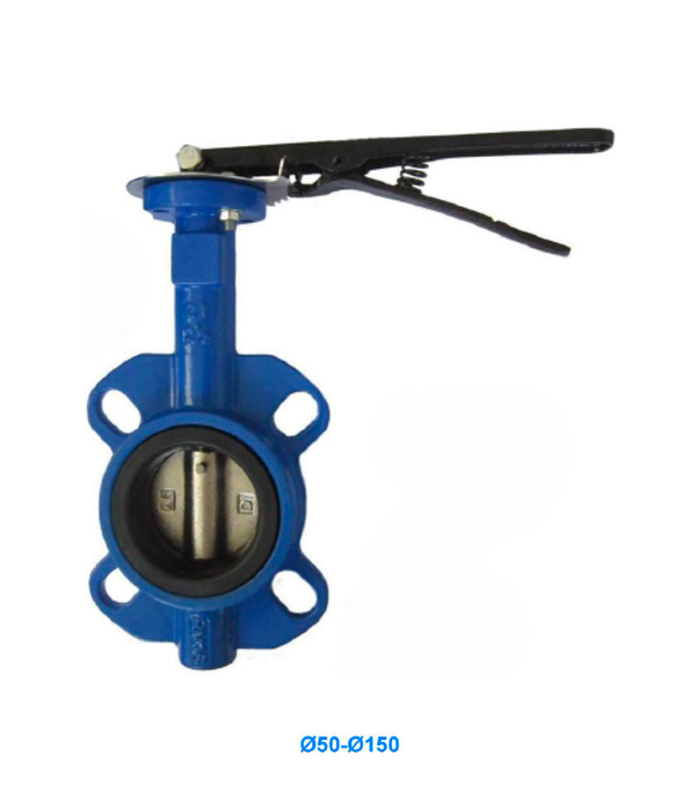Our butterfly valve is a wafer connection type and is sandwiched between two pipe flanges. Long bolts that run through the entire valve body connect both pipe flanges. This type of connection is suitable for sealing against bi-directional differential pressures and preventing backflow in systems designed for universal flow.
It is a very popular quarter-turn, two-way, resilient-seated valve for on-off or modulating services. It is centered (concentric) whose axis is located in the center of the disc, which is centered on the inside with respect to the X, Y axes. The tightness is optimal and it is a suitable valve for low pressure ranges. It is lightweight, takes up little installation space, has a lower cost, works quickly and is available with large hole sizes. The disc is connected to a shaft that when the valve opens the disc rotates to allow the passage of fluid and closes when the shaft rotates the disc to a position perpendicular to the direction of flow.
The standard construction is lever-operated, economical and easy to operate.
It has a flange in its upper part in accordance with ISO 5211, which is the international standard that specifies the requirements for fixing part-turn actuators to industrial valves. This butterfly valve is used for water treatment, wastewater, irrigation and in various industries and industrial applications. Not recommended for bulk solids.
IMPORTANT: Both during storage and when assembling it, the Butterfly valve must always be ajar, to avoid in the first case deformations of the elastic seat (elastomer) and during assembly to avoid tensions or forces that prevent proper centering and fastening that Do not close the valve properly.











